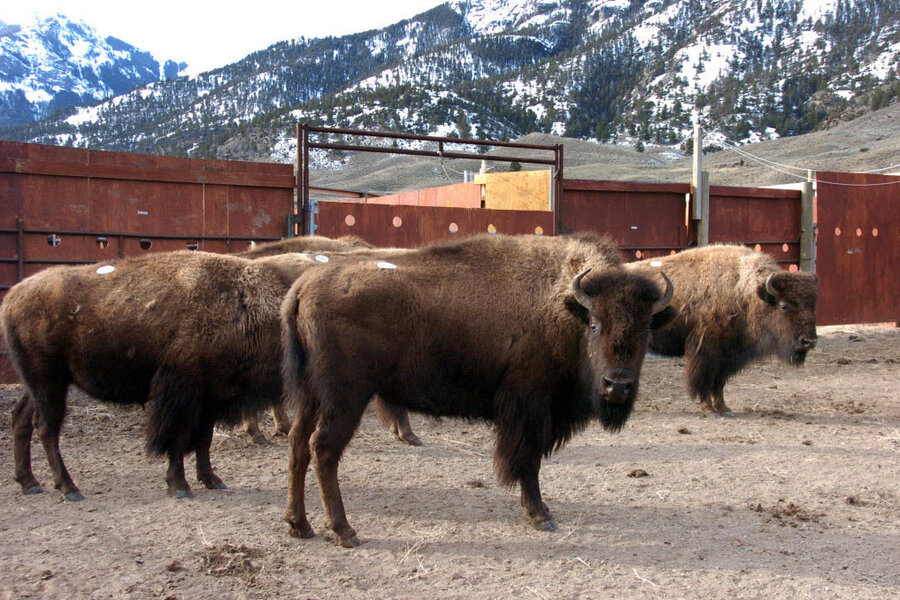Why Yellowstone officials are forced to slaughter bison
Yellowstone National Park, home to one of the last remaining populations of wild buffalo, is sending some of its herd to slaughter.
Some 150 bison will be sent to slaughter over the next few days as part of a plan to cull the herd. The culling has been prompted by concerns from the livestock industry over possible detrimental effects bison can have on cattle around the national park.
An agreement between the national park and the Montana state officials in 2000 requires it to control its bison herds and keep them within park boundaries. The agreement also requires the park to cut down on the size of the herds if it grows too large.
Over-hunting in the 1800s nearly drove bison to extinction. With just dozens of individuals left, conservationists launched an aggressive campaign to save the species. The idea of slaughtering bison today doesn't sit well with many at Yellowstone.
"Nobody here wants to be doing this," park spokeswoman Jody Lyle told The Associated Press after the bison were prodded into trailers. "It's time for a change."
At last count, some 4,900 bison roamed Yellowstone, but the agreement with Montana dictates that the park must keep the population under 3,000. The overgrown population has resulted in harsh kill quotes for the bison over the last few years. The current goal is set at removing 600 to 900 bison.
The limit was established to ensure that bison did not migrate from park property to state property and to help stem the spread of brucellosis, a disease ranchers fear could spread from bison to cattle. There have been no recorded bison-to-cattle transmissions of brucellosis.
"This is not OK. It's really that simple," Stephany Seay with the bison advocacy group Buffalo Field Campaign told AP.
In recent years, local, state, and federal governments have advocated for public hunting just beyond the boundary of the park. Any meat gathered from the dead bison is distributed among Native American tribes that traditionally subsist off buffalo.
Hunters so far this winter have killed more than 400 of the animals, according to Andrea Jones with Montana Fish, Wildlife and Parks. Reportedly, that is the largest number hunted since 1989.
The hunts have also resulted in a historic number of injured bison fleeing back into national park territory. Up to 50 wounded bison were killed by state and federal wildlife agents this winter, Ms. Jones told AP.
Other alternatives, like transferring some Yellowstone bison to other protected lands, are being considered but will take time to be put into effect.
Tolerance for bison migrating onto some state land has also grown. In December, Montana Gov. Steve Bullock (D) moved to allow bison to enter areas adjacent to Yellowstone National Park, something he and his predecessor had pushed for more than a decade.
Wildlife officials at Yellowstone have applauded the increased support for the bison, but say they are still legally bound to conduct the controlled slaughters.
This report includes material from The Associated Press.







